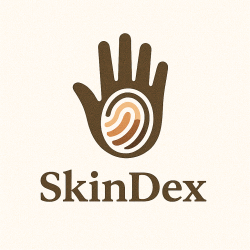
Acne is one of the most common skin conditions in the world—yet also one of the most misunderstood. You’ve probably heard people casually blame it on “hormones” or reassure you that it’ll just go away with time. But what does that actually mean? What role do hormones really play in acne—and why doesn’t it always disappear on its own? In this post, we’ll break down the biochemistry behind hormonal acne and explore how your skin responds to shifts inside your body.
Hormones are chemical messengers that help regulate everything from growth to mood to skin health. During puberty or hormonal shifts, the body produces more androgens—a group of hormones that includes testosterone. Androgens are central during puberty, driving physical changes like hair growth and voice development.
In the skin, androgens stimulate sebaceous (oil) glands, telling them to produce more sebum—the oily substance that moisturizes skin. But too much sebum can clog pores, especially when mixed with dead skin cells and bacteria.
Once a pore becomes clogged, it creates the perfect environment for a normally harmless skin bacterium called Cutibacterium acnes to multiply. As the bacteria break down the trapped sebum, they release byproducts that irritate the surrounding skin. This triggers an immune response—your body sends white blood cells to the area, leading to inflammation, redness, and the formation of pimples.
In short, androgens kickstart a chain reaction: more androgens → more sebum → clogged pores → bacterial overgrowth → inflammation.
This explains why acne often appears during puberty and flares up during hormonal changes like menstrual cycles and pregnancy.
But it also explains why acne doesn’t always “just go away.” If your hormone levels remain imbalanced or your skin is particularly sensitive to even normal levels of androgens, breakouts can persist well into adulthood.
Why Everyone’s Acne Looks Different
Not everyone’s skin reacts to hormones the same way—and that’s where genetics, skin type, and even lifestyle come into play. Some people have sebaceous glands that are more sensitive to androgens, while others may produce stickier sebum or shed dead skin cells irregularly, making it easier for pores to get clogged.
Additionally, stress can worsen hormonal acne by increasing cortisol levels, which may indirectly boost androgen activity. Diet, while not a root cause, can also influence acne for some people—high glycemic foods and dairy have been shown in some studies to aggravate breakouts, potentially by affecting insulin and IGF-1 (insulin-like growth factor) levels, which can increase sebum production.
Treating Acne Isn’t One-Size-Fits-All
Because hormonal acne stems from a complex interaction of internal and external factors, what works for one person may not work for another. Dermatologists often take a layered approach—combining hormone-regulating medications with topical treatments and lifestyle changes tailored to each individual’s skin biology.
Takeaway:
Acne isn’t just a cosmetic issue—it’s a visible signal of underlying biochemical activity. Understanding the hormonal science of acne can empower you to seek targeted, science-backed treatments rather than relying on myths or quick fixes. Whether you’re a teen navigating puberty or an adult dealing with stubborn breakouts, knowing the “why” behind your acne is the first step toward long-term, effective solutions.
Sources:
“Androgens.” Cleveland Clinic, 28 Feb. 2023, https://my.clevelandclinic.org/health/articles/22002-androgens. Accessed 4 June 2025.
“Hormonal Acne.” Cleveland Clinic, 9 May 2022, https://my.clevelandclinic.org/health/diseases/21792-hormonal-acne. Accessed 4 June 2025.
Progesterone. ScienceDirect, https://www.sciencedirect.com/topics/psychology/progesterone. Accessed 4 June 2025.
“What Is Hormonal Acne and Why Does It Happen?” Columbia Skin Clinic, 18 July 2022, https://columbiaskinclinic.com/medical-dermatology/hormonal-acne-what-it-is-and-why-it-happens/. Accessed 4 June 2025.
